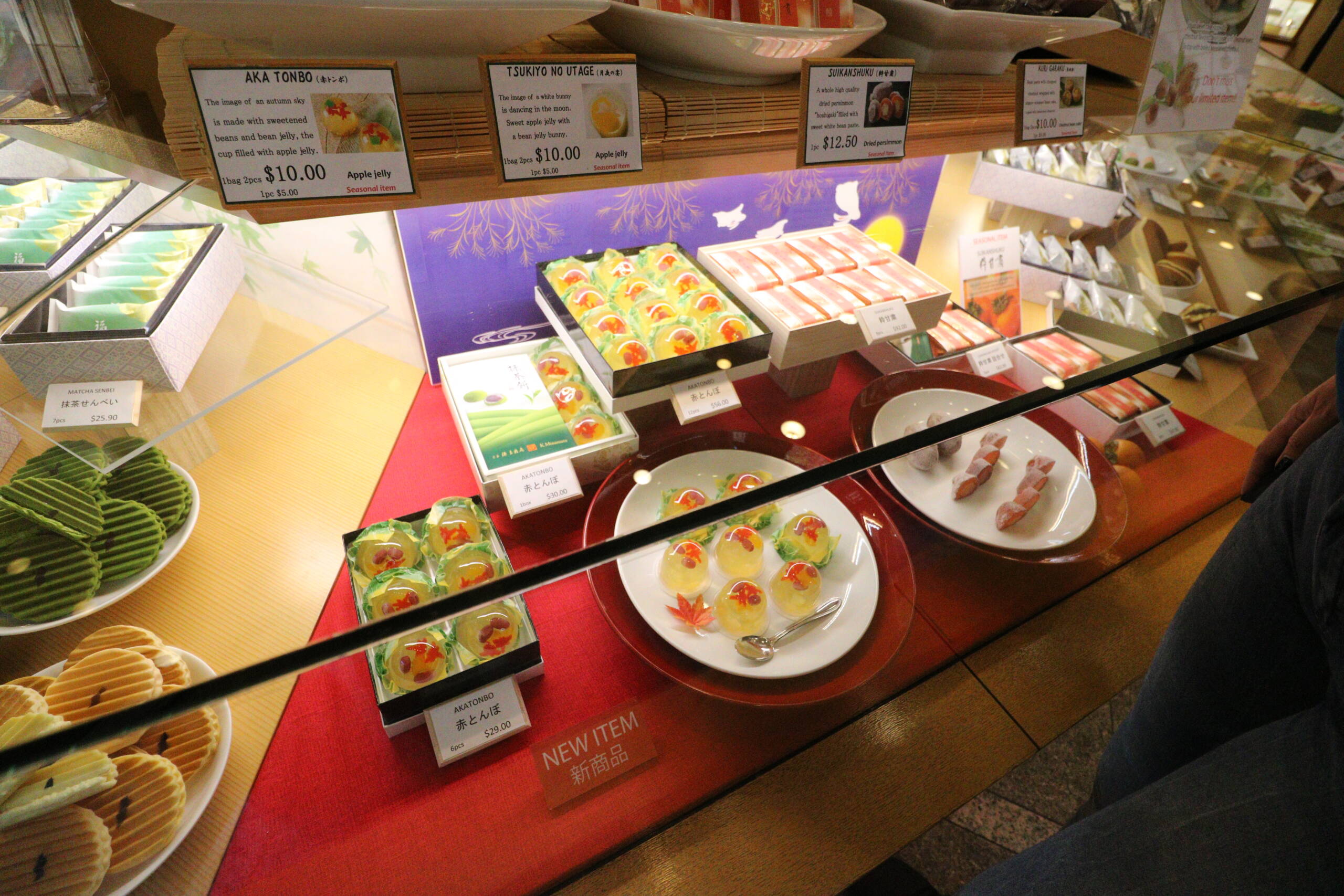Standing in front of the glass counter, I felt a little like a child again—nose nearly pressed against the glass, eyes darting from one jewel-like dessert to another, trying to take them all in at once. These weren’t just sweets; they were tiny worlds captured in sugar and jelly. Each little dome seemed to hold its own secret. The Aka Tonbo, for instance, looked as though autumn had been preserved inside—an amber apple jelly cup with a delicate splash of red, like a leaf caught mid-fall. There was something oddly moving about it, as if the confectioner had taken the season’s passing beauty and said, “Here, keep this a little longer.”

Then there was Tsukiyo no Utage, a name that already felt like a poem before even reading its description: “a white bunny is dancing in the moon.” And sure enough, inside that translucent jelly was the tiniest white bean bunny, frozen mid-leap, suspended in an edible moonlight glow. It almost felt wrong to eat it, as though nibbling at a dream. This wasn’t sugar made to be mindlessly devoured—it was sugar made to be contemplated, admired, and then, reluctantly, tasted.
Even the boxed sets had their own quiet allure. They weren’t flashy in the way Western desserts sometimes are; no loud colors, no over-the-top frosting. Instead, they were meticulously arranged like museum artifacts, each piece identical yet unique in its slight variations. The green matcha wafers stacked neatly to the side, the pale pink packages lined in perfect rows—everything about the display whispered patience, craft, tradition. It was as though each treat carried not only flavor but a story, a ritual, a season folded into its design.
I realized then that Japanese dessert-making isn’t only about satisfying a sweet tooth. It’s about honoring transience—capturing the fleeting beauty of nature, the shifting of seasons, the ephemeral joy of a festival or a moonlit night. You don’t just eat these; you pause first, you let your eyes wander over the delicate details, and only then do you lift one gently to your lips. And when you finally do, the taste lingers differently because you’ve already been seduced by its beauty.
I stood there longer than I expected, weighing the impossible question: which to take home? Do I go for the autumn leaf glowing in amber? The playful rabbit bouncing inside its moonlit jelly? Or maybe a mix, a little gallery of edible art to unwrap later and admire all over again? In the end, it felt less like buying dessert and more like curating a tiny exhibition that just happened to melt sweetly on the tongue.
Leave a Reply